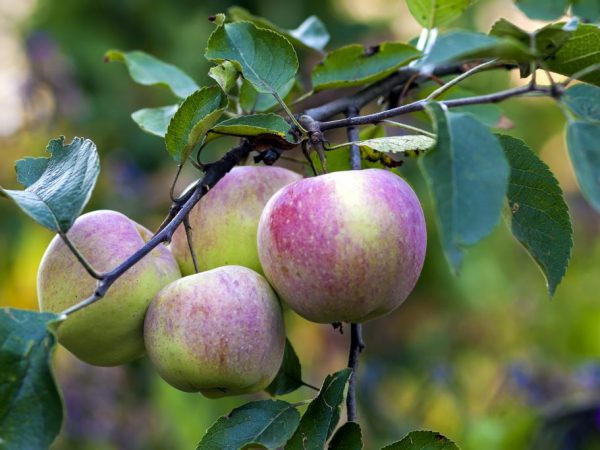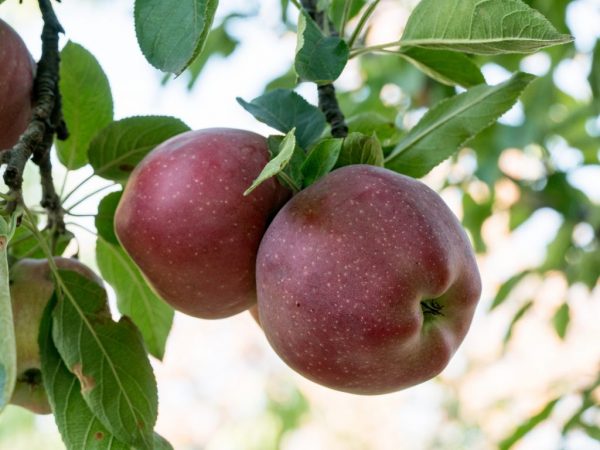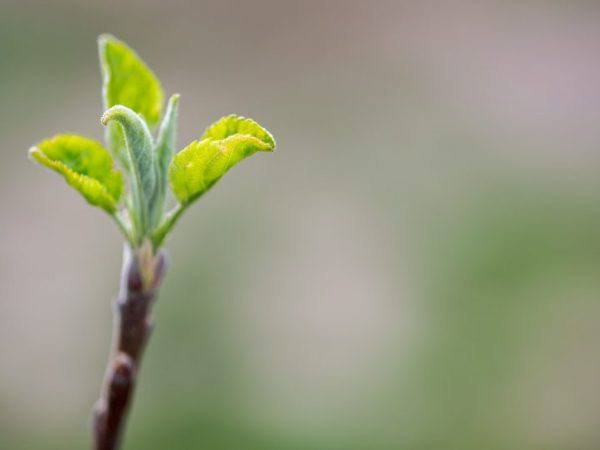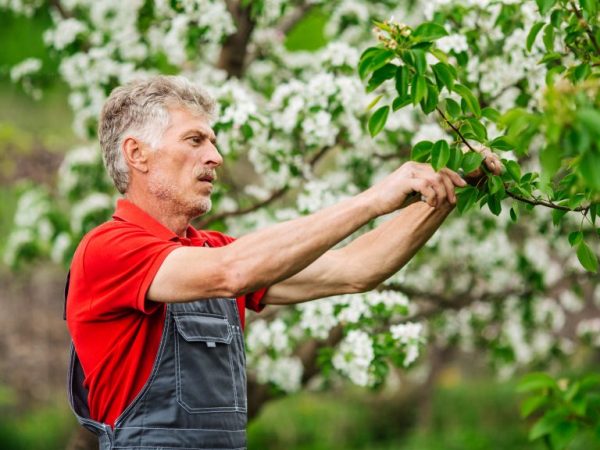Varietal characteristics of the Solntsedar apple tree
The Solntsedar apple tree was bred artificially by Sverdlovsk breeders at the station. Obtaining a new variety is a consequence of the pollination of scarlet Anise. The seedlings have undergone serious hardening, thanks to which the species has acquired immunity to cold weather and temperature extremes.
- Characteristic
- Advantages and disadvantages
- Description of the tree and fruit
- Yield
- Taste characteristic
- Winter hardiness
- Pollinators
- Disease resistance
- Transportability
- Using apples
- Landing
- Open root system and cuttings
- Care
- Pruning and shaping the crown
- Bush formation
- Pest control
- Flowering and fruiting period
- Harvesting and storage
- Growing regions
- Testimonials

Varietal characteristics of the Solntsedar apple tree
Characteristic
Sunflower is a self-infertile variety. This means he needs pollinators. The features of the apple tree include the following:
- gradual ripening of fruits, in 2-3 phases;
- over time, fruiting becomes periodic;
- suitable for cultivation in the city.
Advantages and disadvantages
The main advantages of the variety:
- excellent taste and attractive appearance of the fruit;
- winter hardiness;
- good productivity;
- fruiting in summer;
- small dimensions of the apple tree.
The disadvantages that distinguish Solntsedar include poor resistance to fungal diseases and inconstancy of fruiting with aging.
The short storage period of apples and the need for pollinators are also considered disadvantages of the variety.
Description of the tree and fruit
Adult Solntsedar apple trees are low - up to 3 m. The trees have a rounded, slightly thickened crown up to 3 m wide, which eventually becomes spreading and droops down.
The apple tree has a dark brown trunk and branches. The leaves of the tree, which are medium in size, have a greenish tint on top and gray on the bottom. Short petioles are rather strong, with small stipules.
Large flowers are white, with a pinkish tone around the edges. The fruits themselves are of average size for apples, they reach a weight of 90-150 g. They have a round shape, sometimes with slight ribbing.
The smooth peel is covered with a slight bluish bloom.
Yield
The variety can bear fruit no earlier than the seventh year of cultivation. The apple tree has a very good yield, 80-100 kg of fruit are harvested from the tree.
Taste characteristic

The fruits have good taste.
The rich white flesh of the fruit is as attractive as the fruit itself. It is sweet and sour, tart, has a taste of wine.
The fruit contains 10-12% sugars, 12-15% dry matter and 11-25 mg of ascorbic acid.
Winter hardiness
The high frost resistance of the variety is its distinctive feature. Similar indicators were obtained by hardening in a harsh climate during breeding work.
There is no need to cover the apple tree for the winter, even if the tree has just been planted. It can withstand temperatures down to -40 ° C. The only threat of the cold season is rain, which damages young branches.
Pollinators
The tree needs pollinators to bear fruit well. The main criterion for the correctness of their planting is the location at a short distance from it and the coincidence of the flowering time.
For this, the varieties Vinnoe, Suislepskoe, Antonovka are suitable.Also choose Pepin and White filling.
Disease resistance
The description indicates that part of caring for an apple tree is combating common diseases, especially fungus. The variety is susceptible to the following ailments:
- scab, expressed in the appearance of brown spots. To solve the problem, the tree is sprayed with urea;
- milky sheen - a layer of gray on the sheet. The apple tree is treated with soda ash;
- powdery mildew - a coating on fruits and leaves that has a white or grayish tone. To get rid of it, use colloidal sulfur or Bordeaux liquid;
- rot. A culture can be cured by preventing the spread of the disease. For this, diseased apples are removed.
Transportability
The Solntsedar apples have a solid and durable structure. They are transported in boxes, tightly pressing against each other.
Fruits keep their shape well, do not crack, and their juice does not drain if damaged. It is an excellent grade for long haul operations.
Using apples
The fruits are put into play immediately after harvest. They are eaten fresh or canned. They are used in the preparation of pies, various dishes, and compotes are made from them.
To prepare the fruits for the winter, they are dried and frozen. The seeds are used as seed.
Landing

Planting is best done in April.
The sunflower is unpretentious to growing conditions. In order for the seedling to take root, they adhere to several rules:
- choose a site with good lighting;
- make sure that there are no drafts and water accumulation nearby;
- take care of the tree.
The apple tree is planted in spring and autumn, but it is best to do this in April.
Open root system and cuttings
If you bought seedlings with an open root system, before planting you need to:
- keep them in water for a day;
- dip the root into a clay solution not thicker than sour cream;
- lower a young tree into the hole, sprinkle with soil and water.
For propagation of Solntsedar, cuttings are often used. From early summer to mid-July, 15-20 cm cuttings are cut. At a distance of 5 cm from the kidney located below, an oblique cut is made. At the top, it should be straight.
The leaves on the bottom are removed. Then the cuttings are transferred to prepared soil and covered to create conditions with a temperature of about 30 ° C and humidity up to 100%.
Care
If you take proper care of your trees, you can get a good harvest. Having planted the apple variety Solntsedar, taking into account all the requirements, then do the following:
- regularly inspect for damage and dryness of the branches;
- remove diseased shoots and heal cut sites;
- feed the tree;
- watered in the first year of life, in the spring and summer periods, 15 liters of water are enough for one apple tree;
- loosen the soil near trees and between rows or cover these places with mulch;
- whitewash the trunks twice a year to disinfect the bark and get rid of pests;
- spray trees for diseases;
- form a crown.
Pruning and shaping the crown
The apple tree is pruned twice a year. In the fall, after harvesting the fruits, dry or damaged branches are removed, and in the spring, the procedure is performed before the first buds bloom. This is necessary to prevent diseases caused by a too dense crown, as well as to obtain a rich harvest.

Pruning must be done twice a year.
There are also a few rules here:
- skeletal branches should be as far apart as possible;
- the shoot located in the center should grow above the skeletal ones;
- the higher order of branches is made shorter than the lower one.
Bush formation
Apple trees can be grown as a bush. For this, a 20-centimeter stem is formed, due to which the tree has a conductor and six skeletal branches. A one-year-old seedling is cut off the top. From the shoots on the sides, the three strongest are selected and three buds are cut off.
The next year, on the tier above, two more branches are taken and shortened. The remaining shoots are made less by 20 cm. When a tree has formed up to two meters in height, the guide is removed.
Pest control
Most often this variety is attacked by leafworm, aphid and apple moth. To get rid of them, you need to treat the trees with insecticides.
Parasites do not particularly harm apple trees, but they spoil the appearance of both the tree itself and the fruits. There are methods to combat each of the insects:
- aphids - destroy the old bark and spray the tree with Bordeaux liquid;
- leaf roll and moth - karbofos helps.
Flowering and fruiting period
The flowering of the Solntsedar apple variety falls in mid-late May. This period lasts up to 14 days. The first fruits appear at 4-5 years of development, and the maximum yield can be harvested at 7-8 years of tree growth.
The fruits reach biological ripeness at the beginning of the last summer month. The period from biological to full maturity lasts about 4 weeks.
Harvesting and storage
It is better to harvest the main fruit two weeks after reaching biological maturity, so that the apples do not overripe and become soft. Despite the dense structure of the fruit pulp, it is undesirable to crush them, you can only pluck them. The collection should be carried out in dry weather.
Apples of this variety are not stored for very long. If kept outdoors, they stay fresh for two weeks to one month.
Leaving the fruits for storage at low temperatures, you can extend this period to 2-2.5 months. For the longest time, apples of this variety are stored in dry cellars or storerooms.
Growing regions
You can often find Solntsedar in the Leningrad and Moscow regions, as well as in the Urals. In these places, the variety takes root well.
The optimal conditions for it are the continental climate, accompanied by warm summers and long autumn.
The variety grows both in Altai and in the western part of Siberia, but because of the severe cold in these places, the stanza form is used. If the tree is planted in the usual way, it is covered with mats or other means to keep it warm for the winter.
Testimonials
Gardeners are pleased with the Solntsedar apple tree, because it bears a bountiful harvest and has good winter hardiness. They note that the fruits are not stored for very long, but in processed form they delight households and guests with their taste. Mousses and jams are prepared from them, compotes are cooked, dried fruits are made.
Their description indicates that the trees are often sick, but if they are processed in time, this does not affect the harvest.

